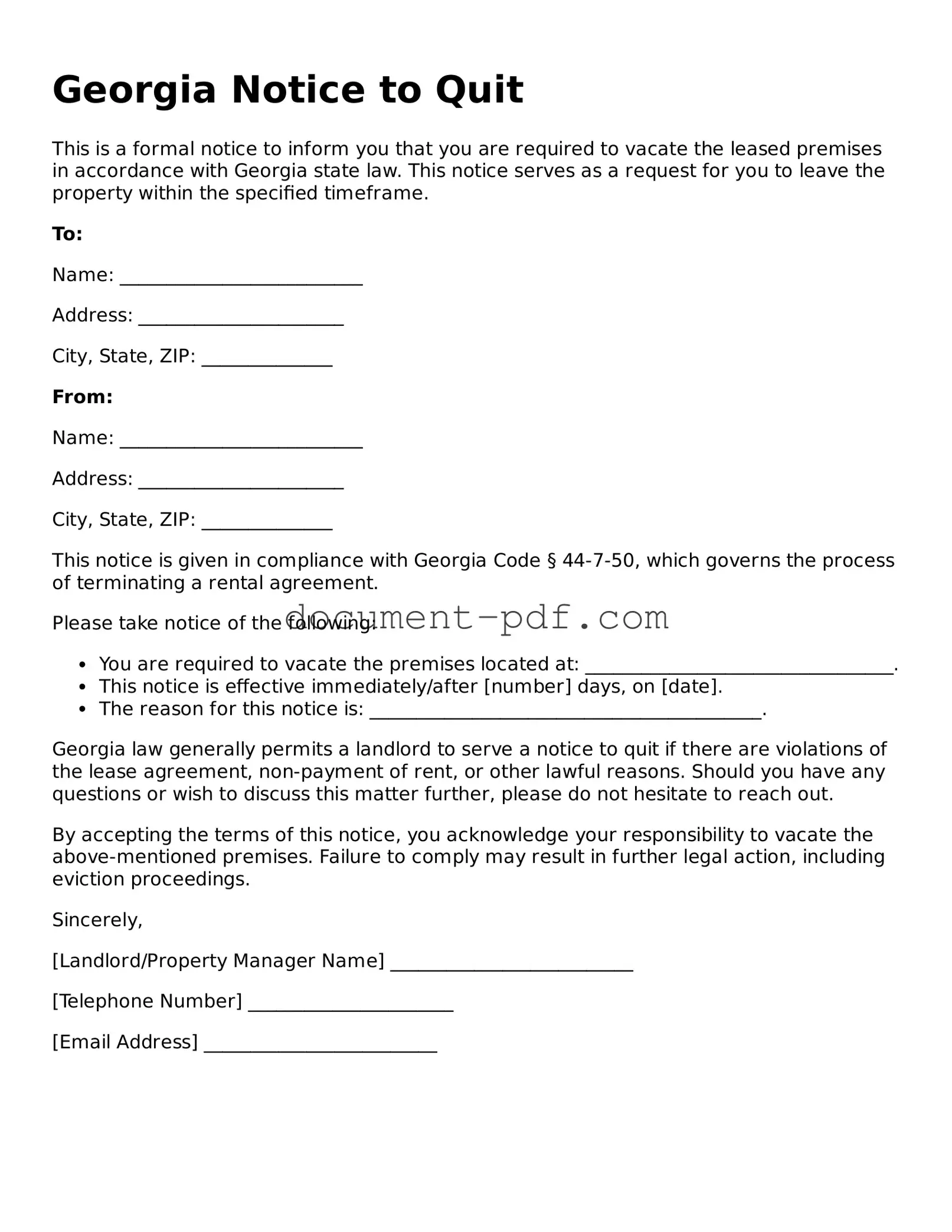Georgia Notice to Quit
This is a formal notice to inform you that you are required to vacate the leased premises in accordance with Georgia state law. This notice serves as a request for you to leave the property within the specified timeframe.
To:
Name: __________________________
Address: ______________________
City, State, ZIP: ______________
From:
Name: __________________________
Address: ______________________
City, State, ZIP: ______________
This notice is given in compliance with Georgia Code § 44-7-50, which governs the process of terminating a rental agreement.
Please take notice of the following:
- You are required to vacate the premises located at: _________________________________.
- This notice is effective immediately/after [number] days, on [date].
- The reason for this notice is: __________________________________________.
Georgia law generally permits a landlord to serve a notice to quit if there are violations of the lease agreement, non-payment of rent, or other lawful reasons. Should you have any questions or wish to discuss this matter further, please do not hesitate to reach out.
By accepting the terms of this notice, you acknowledge your responsibility to vacate the above-mentioned premises. Failure to comply may result in further legal action, including eviction proceedings.
Sincerely,
[Landlord/Property Manager Name] __________________________
[Telephone Number] ______________________
[Email Address] _________________________
